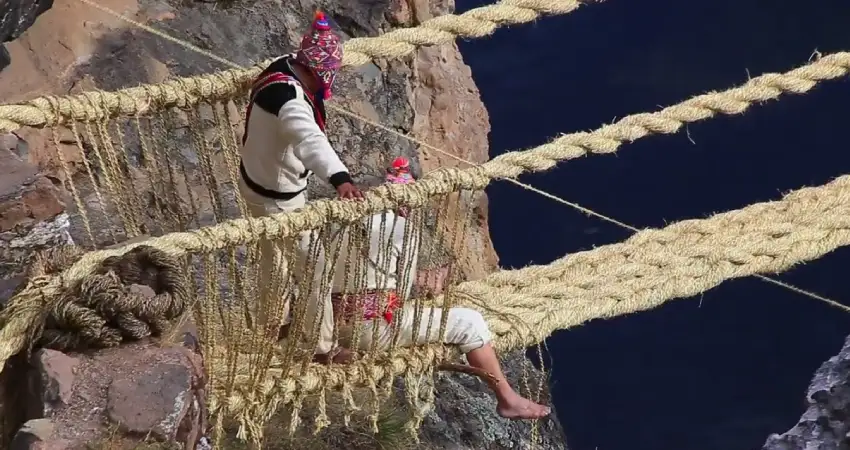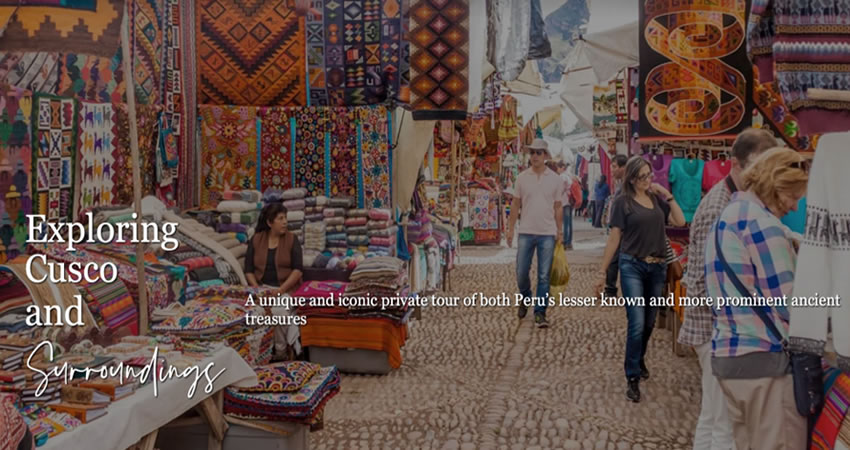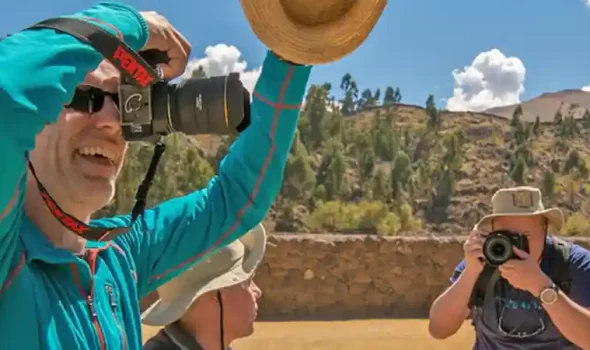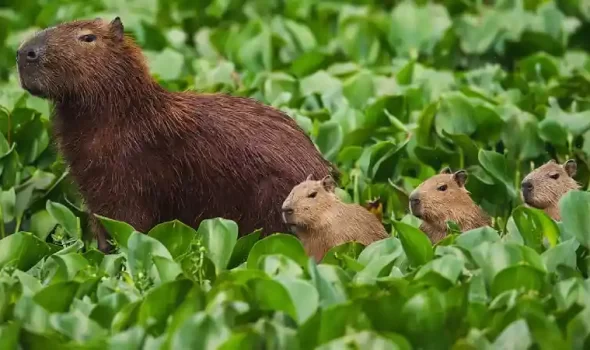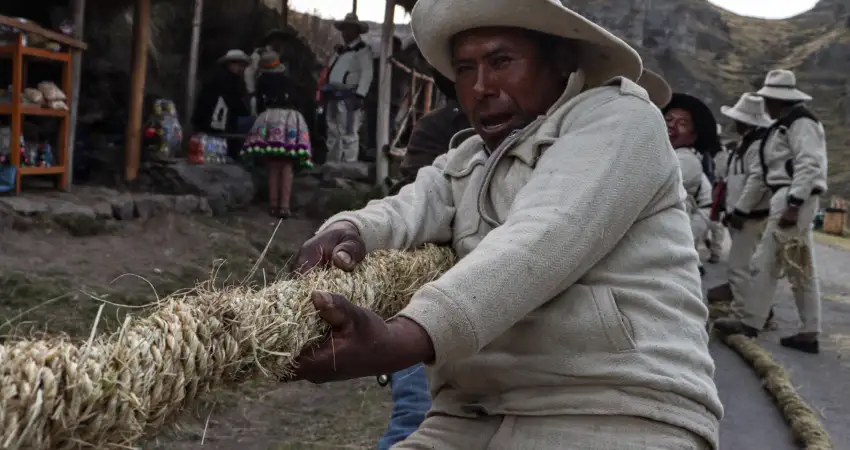
Qeswachaca Bridge
1.- QESWACHACA BRIDGE: A MARVEL OF INCA ENGINEERING
The Qeswachaca Bridge is one of the modern traditional wonders that you can know during your visit to Cusco in 2024, according to studies that were conducted during the time of the Inca culture there was a network of roads that were known as the Qhapaq Ñan, this network of roads allowed the connection and communication from northern Colombia to southern Chile, naturally the roads led to incredible places with unique landscapes but in some cases these roads had natural obstacles such as a river or a valley between two mountains, for this reason taking advantage of the environment were manufactured this kind of handmade bridges with ropes, straw, stones or even wood, handcrafted. According to the source of the New York Times during the best moment of the Inca culture there were around 200 bridges and Q’eswachaca Bridge is the last one to be appreciated. For its elaboration and ingenuity it is considered one of the best engineering works in history.
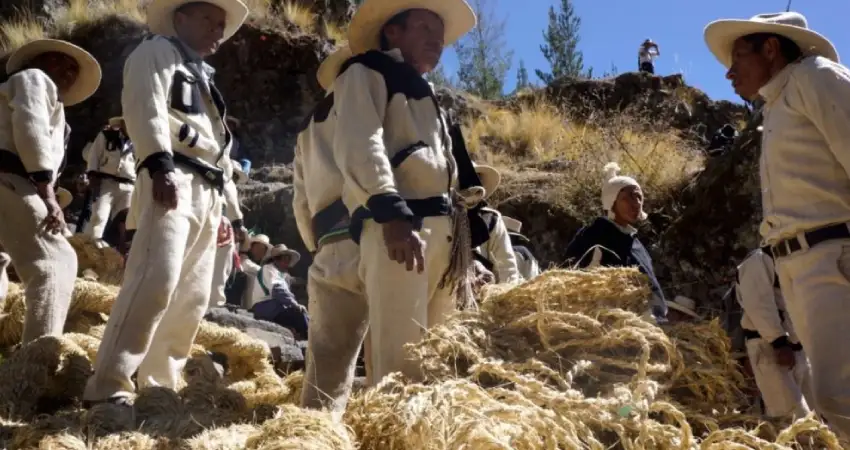
Qeswachaca Bridge the building process
The Q’eswachaca Bridge derives its name from 2 Quechua words, “Q’eswa” which means “Rope” and “Chaka” which represents “Bridge”, making a serious translation Rope Bridge, naturally to be made by organic materials comes a time when it must undergo maintenance so every year the local communities come together to maintain and preserve this place that for them is a direct connection to the Inca cultural heritage.
2.- HOW TO GET TO THE QESWACHACA BRIDGE
The visit to Qeswachaca Bridge definitely falls into the category of things you must do at least once in your life. A marvel of engineering, a completely handmade suspension bridge through which you can walk during your visit, to get to know it you have 2 options:
- The first option to visit Qeswachaca Bridge is a guided experience with other travelers in which you leave Cusco very early (around 04:30 am to 05:00 am), to be able to travel the road south to reach the community of Cusipata where you take advantage of the time to have breakfast and then continue the way to the viewpoint of Combapata, you will also enjoy a visit to the mini volcanology of the Pavilions, after an impressive road with unique landscapes finally reach the district of Q’ewe where the popular Q’eswachaca Bridge is located, within this experience you will also visit the four lakes (Pampamarca, Asnacqocha, Acopia and Pomacanchi), at the end of the visit to Qeswachaca Bridge you will return to the same restaurant to have lunch and then continue the road to return to Cusco, arriving approximately at 16: 00 pm.
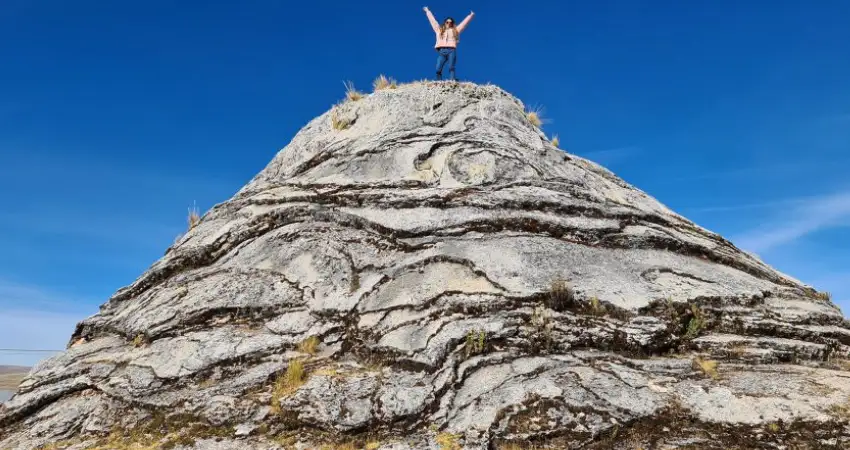
Pavilions volcano
- The second option is more free for travelers who do not like to plan anything, you can visit the Q’eswachaca Bridge on your own. For this you can take a local bus to Combata and from there take a cab to Q’ewe.
| This world is too big to spend all your time in one place, travel now.” |
3.- THE TRADITIONAL FESTIVAL
During the month of June there is a festival in which almost 800 people participate with the intention of renewing the beautiful Q’eswachaca Bridge, this celebration lasts about 4 days in total to achieve a new appearance to the traditional suspension bridge.
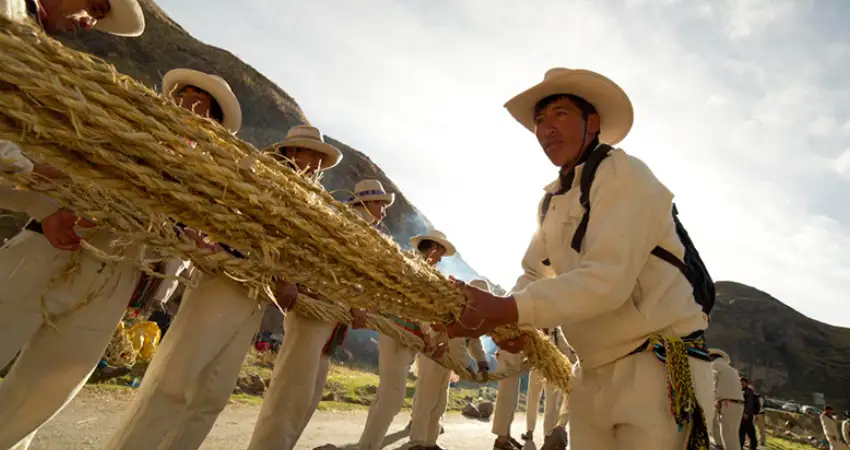
Q’eswachaca Bridge suspension
- Day 01: It is the starting point of this festivity, here an Andean priest is the main host who initiates the ceremony and a ritual in honor of the Apus (Mountains) asking for permission to start in the best way. Everything begins when the Q’eswachaca Bridge that is currently united completely to remove it falls into the river below. It is at this moment that the women begin the collection of Ichu which is a straw that grows abundantly in this sector with which they begin to make braids which then unite to form the entire path of the suspension bridge.
- Day 02 and 03: It is the most important moment during the festival of the Q’eswachaca Bridge, and with the ropes made is separated between the thicker ones that serve as support and the thinner ones as a connection between them. The base also requires wooden planks that are joined together with the ropes to form a path where one person can pass at a time. This task is carried out by the men and after 2 really tiring days, a new Q’eswachaca Bridge is obtained for a new year.
- Day 04: It is the final moment of the construction of the Q’eswachaca Bridge, it is the moment when it is completed and it is time to test it, for them the visitors are the ones who can pass through it, not only is the experience of crossing this suspension bridge but also to enjoy the incredible view that it offers you, unique landscapes of dreams. After everyone has enjoyed the experience they participate in a ceremony of thanks to mother earth where they ask for a blessing so that the bridge can last for another year, then begins the celebration in which they participate in the colorful and fun dances, it is also an incredible moment to taste the delicious Baked guinea pig and fried trout, this celebration lasts all day.
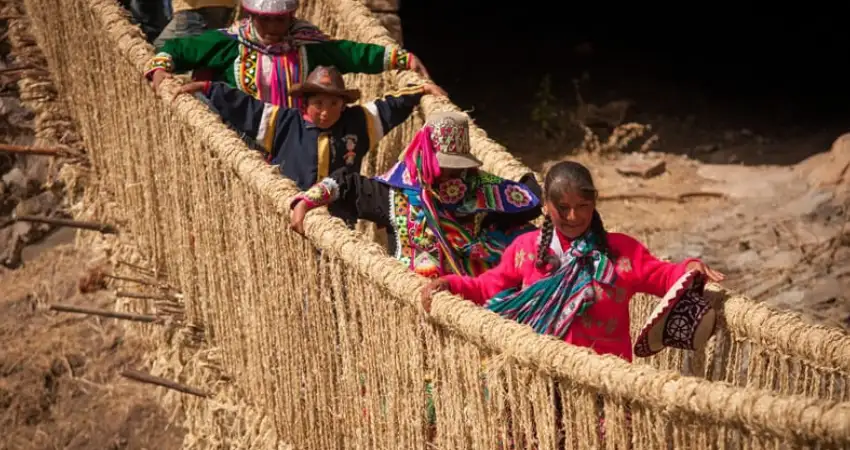
people crossing the Qeswachaca Bridge
4.- A TRADITION THROUGH TIME
“This Incan engineer’s marvel beckons “Cross, explore!”
Footsteps of the ancients carved into the wild, One sways between two worlds – modern, undefiled.”
5.- THE BEST TIME TO VISIT THE QESWACHACA BRIDGE
It is definitely important to know that the best time to visit Q’eswachaca Bridge is during the dry season (between May and October) since it is the time when the weather is more stable and there is not so much presence of rains of course because of the altitude at which the cold is something that is always present for that reason it is a good idea to bring warm clothes. As a personal recommendation it is best to visit the Q’eswachaca Bridge in June because it is in this month that the nearby communities gather to perform a festival that lasts 4 days with the intention of renewing the bridge for another year, this is accompanied by music, dance, food and celebration.
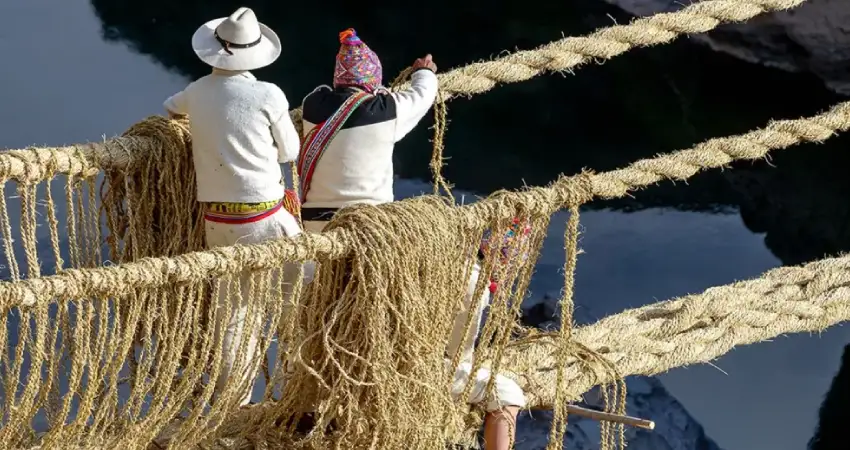
building the bridge
On the other hand if your visit to the Qeswachaca Bridge is planned for another month you should take the precaution of taking a rain poncho for safety, the rest of the year the rains are more frequent and can be from one moment to another.
6.- CURIOUS FACTS ABOUT THE QESWACHACA BRIDGE
- It is a quite extensive bridge, it is about 29 meters long and only 2 meters wide so only one person can pass at a time and enjoy the view in addition to the height that is almost 30 meters above the Apurimac River.
- It is an ingenuity of the Inca culture’s construction because during an earthquake it would not be destroyed.
- It is made of thin grass fiber, known as the Ichu, a natural plant of the Andes and is incredibly resistant when used in a woven manner.
- The renovation festival is celebrated only once a year, however the Q’eswachaca Bridge is open all year
- Such is its popularity and tradition that in 2013, UNESCO declared the Festival as Intangible Cultural Heritage of Humanity, for the sample of culture it presents.
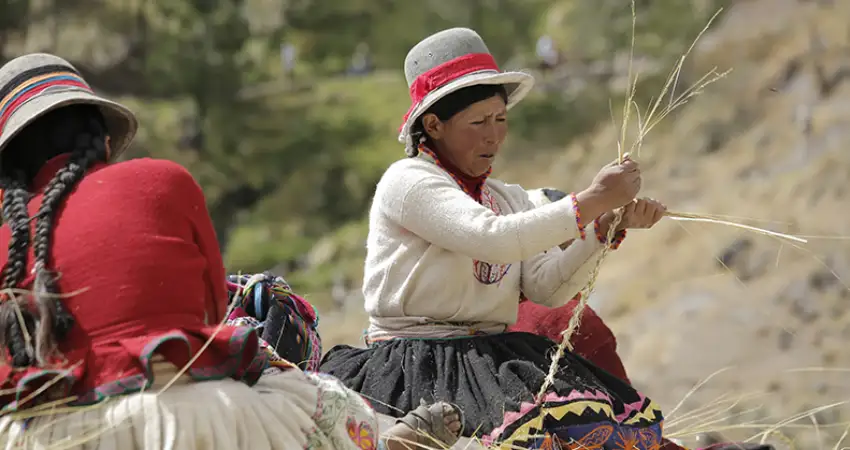
women work in the building process
Now you know a bit more about it, you need to include Q’eswachaca Bridge in your trip this 2024, Auri Peru organizes special departures for this destination that you can take advantage of, contact us now and find out more.
“Adventure is worthwhile”.




